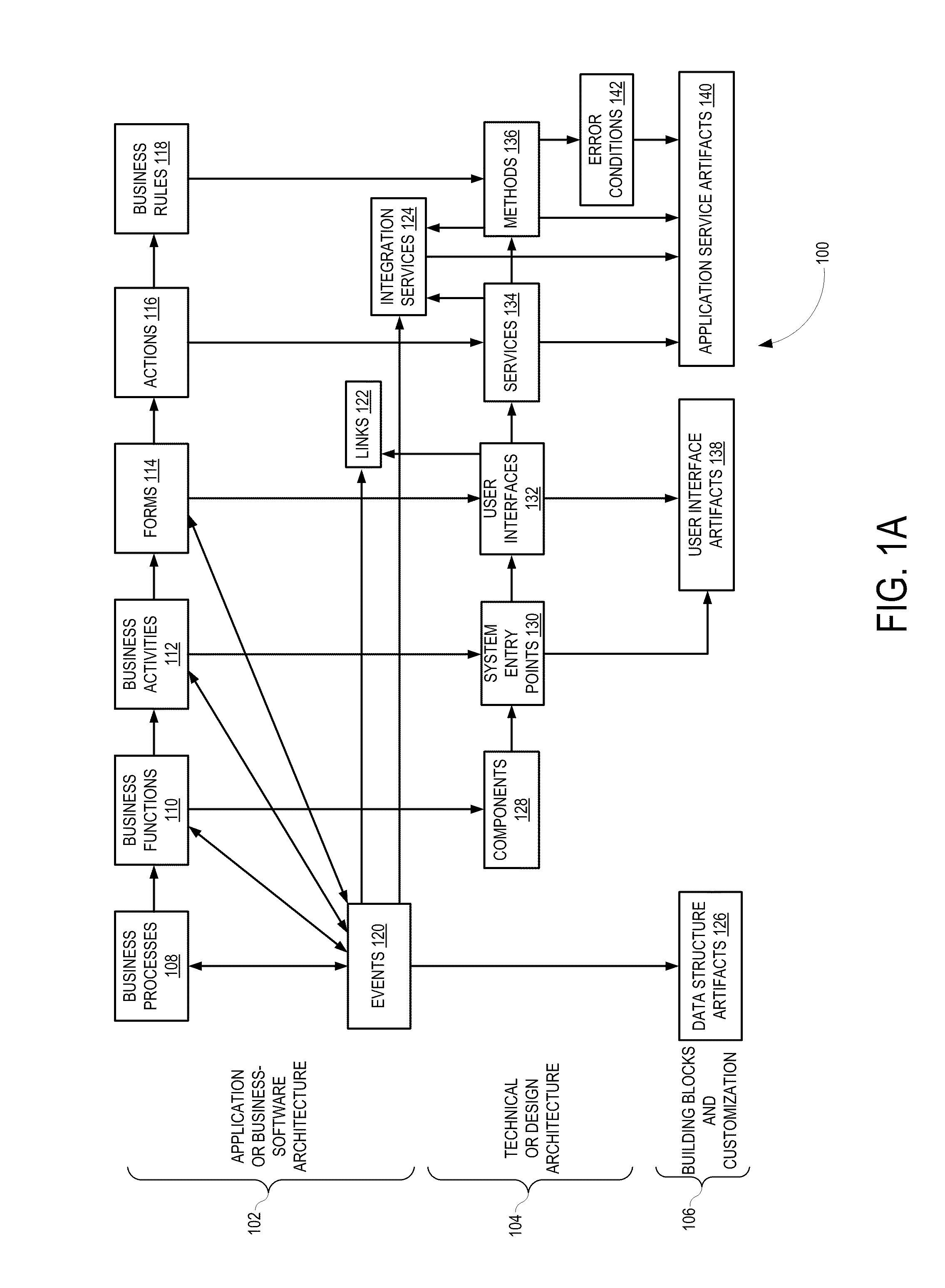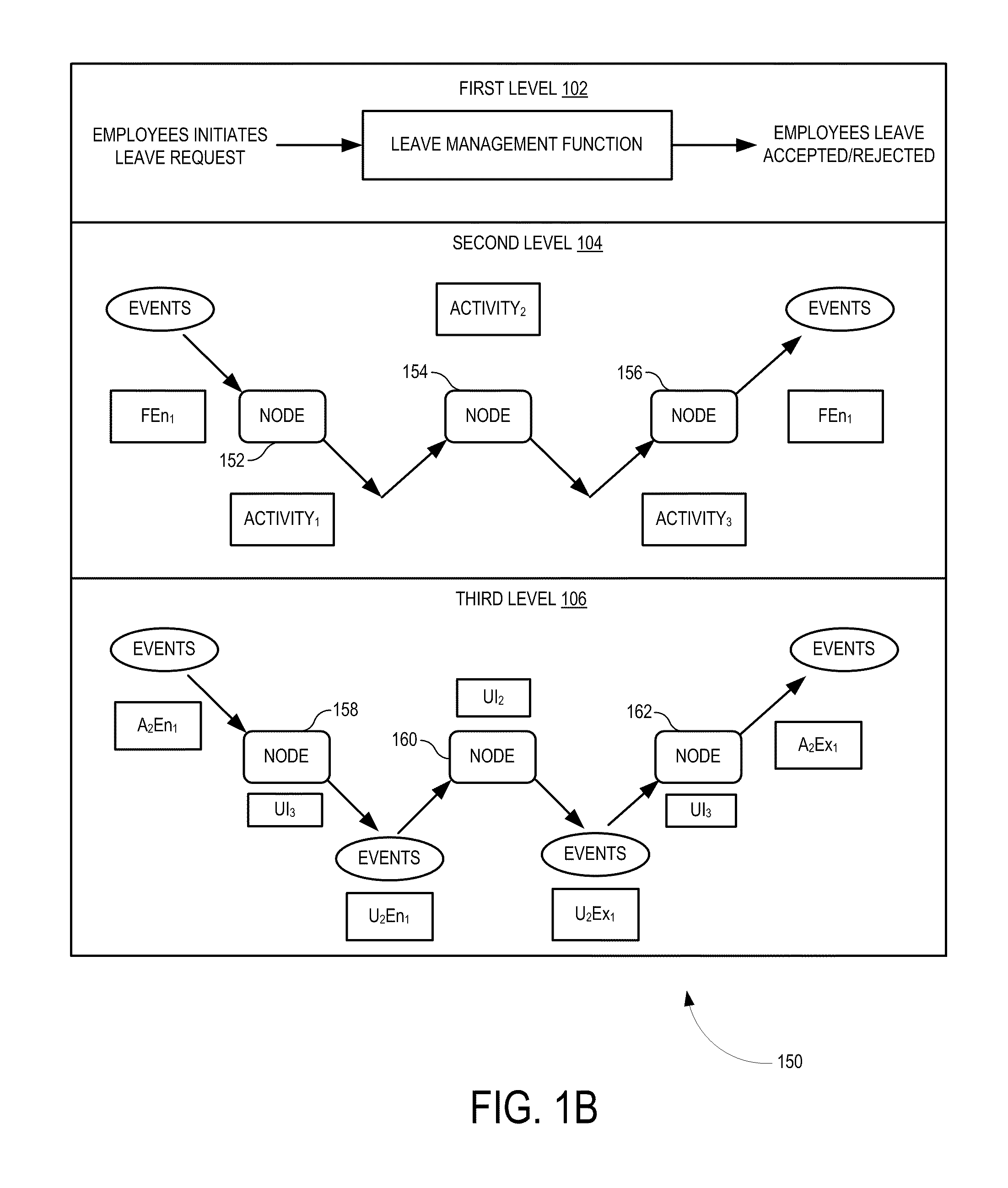Component based software system
a software system and component technology, applied in the direction of source code generation, instruments, requirement analysis, etc., can solve the problems of inability to express the functionality inside the component, inability to achieve successful development and deployment of software technologies, and the choice of software technology used to create software further complicates system developmen
- Summary
- Abstract
- Description
- Claims
- Application Information
AI Technical Summary
Problems solved by technology
Method used
Image
Examples
Embodiment Construction
[0022]A method and system for component based software system to generate platform specific code for a user interface in a software system is disclosed. In the following description, for purposes of explanation, numerous specific details are set forth in order to provide a thorough understanding of the present invention. It will be evident, however, to one skilled in the art that the present invention may be practiced without these specific details.
[0023]In one embodiment of the invention, a component is defined as a self-contained software application that encapsulates and implements a single function. The terms ‘task’, ‘business task’ and ‘action’ are used interchangeably throughout the document.
[0024]FIG. 1A is a schema 100 for gathering requirements and creating and managing enterprise software from the gathered requirements in accordance with one example embodiment of the present invention. The schema or software structure specification 100 includes multiple levels of abstracti...
PUM
 Login to View More
Login to View More Abstract
Description
Claims
Application Information
 Login to View More
Login to View More - R&D
- Intellectual Property
- Life Sciences
- Materials
- Tech Scout
- Unparalleled Data Quality
- Higher Quality Content
- 60% Fewer Hallucinations
Browse by: Latest US Patents, China's latest patents, Technical Efficacy Thesaurus, Application Domain, Technology Topic, Popular Technical Reports.
© 2025 PatSnap. All rights reserved.Legal|Privacy policy|Modern Slavery Act Transparency Statement|Sitemap|About US| Contact US: help@patsnap.com



